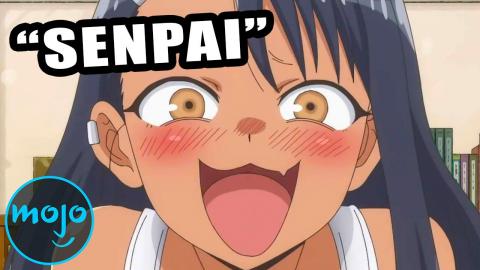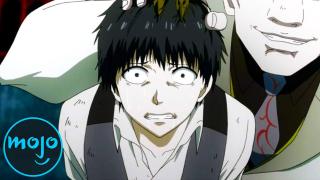Top 10 Things That Don't Translate Well in Anime

Top 10 Things That Don’t Translate Well in Anime
Top 10 Worst Things That Happened to Anime Heroes
Welcome to WatchMojo and today we’ll be counting down our picks for the top 10 things that don’t translate well in anime. For this list, we’ll be going over the features of Japanese language or culture which are difficult to translate into other languages so that other cultures can understand them. If there’s something from anime that flies over gaijin heads which also flew over ours, please tell us in the comments!
#10: Keigo/Modes of Speech
One of the starkest features of Japanese as a language is keigo, or respectful language. While other languages have more respectful ways of speaking, keigo is far more codified than many others. Keigo can convey respect, politeness, humility, or even femininity or masculinity. Although translators usually try their best, there are subtleties that are lost in translation. While we’ll get into more specifics of keigo later on, in broad strokes, characters in anime who use keigo tend to be straight-laced, proper, or old-fashioned. Conversely, by not using keigo, a character can be seen as rude, brusk, or uneducated.
#9: Sibling Terminology
Top 10 Best Sibling Fights in Anime
There are a multitude of terms for siblings in Japanese. Ani, aniki, anigo, onii, otouto, aniue – and those are just some of the words for brother! Other languages, like English, just aren’t equipped to convey things like the nuances involved in each term. Big or little brother/sister are pretty plain by comparison. And then there’s the fact that sibling terminology is also used for people who are cousins or even between unrelated people who share a close bond. It’s common courtesy for most Japanese people to refer to their siblings by one of these terms instead of or in addition to their name. When translating to another language though, it can sound stilted or old fashioned.
#8: Onomatopoeia
Every language has words used to imitate sounds. Although some of these are easily translated, such as “nya” being the Japanese equivalent of “meow,” not all of them are so easy to convey in other languages. They’re also far more codified in Japanese than in some others. For instance, they can pop up in conversation in anime, or characters will say them aloud, which is often done to convey cuteness or to comedic effect. They can also crop up in the titles of anime. Additionally, because many anime are based on manga, some of them retain written sound effects on screen, which are naturally untranslated even by dubs.
#7: Japanese Pronouns
Personal pronouns are important identifiers in many languages, but Japan has some unusual ones. In English for example, the personal pronoun “I” has no gender connotations. Not so for its Japanese equivalents! There are pronouns that denote not only gender, but some are used to denote a person’s age, or at least the age they want to present themselves. Similarly, women who use these pronouns are seen as tomboys. There are also polite or rude ways to address someone as “you.” These subtleties are tough to convey outside of Japanese.
#6: Name Puns
Top 10 Worst Things Done by Anime Villains
Japanese uses several different character writing systems. So sometimes words can be written one way but mean something else, leading to a lot of puns. This is particularly common among names for characters or special abilities in anime. For instance, in “One Piece,” Zoro’s signature attack, “Oni Giri” can mean either “demon slash” or refer to a rice ball dish. This is naturally lost when translated to other languages, since the translators must decide between the literal and metaphorical names, meaning that the puns are often left out. And when they aren’t, it can lead to even more confusion.
#5: Archetypes
Like any story medium, anime has its own archetypes, both for characters and genres. Some of these are unique to Japanese culture, such as the Yamato Nadeshiko (or traditional ideal of Japanese womanhood), while others are more closely associated with anime, such as the various -dere stereotypes. Although a few of these have managed to make their way into pop culture enough that foreign fans can identify them, a lot of them still don’t have equivalent words in other languages, so anyone who uses the terms is bound to sound like a weeb.
#4: Nicknames
Nicknames can be hard to understand in one’s native language. Sometimes they’ll be references to pop culture, or maybe they rhyme or something. Japanese is no different. Translating nicknames can be awkward in anime, since other languages don’t have the touchstones that clue them into why someone has a nickname or what it means. Maybe it has a double meaning or pun that doesn’t translate well. Or maybe the nickname is based on onomatopoeia. Regardless of what the nickname is, something about it is usually missing when it’s converted for a dub.
#3: Speaking English
English is spoken quite frequently in Japan, and is one of the most popular second languages there. English and American culture are big influences there, and characters in anime will often spout English phrases or use English words to emphasize a point, as a catchphrase, or as an attack name to add extra flavor. When these anime are translated into English, these moments are ironically lost in translation. Instead of doing the inverse and using Japanese, the English phrases are usually retained as is. It’s such a shame. A quarter of the best memes in “Jojo’s” just fade into the background…
#2: The Closeness of Given Names
Top 10 Worst Anime Names (ft. Todd Haberkorn)
Most people know that in Japan family names come first when spoken or written. However, family names also take priority in most interactions. If an anime character uses someone’s given name, they’re implying a degree of closeness or intimacy with the person they’re referring or speaking to. Some dubs will eliminate this distinction entirely by only using characters’ first names. While it does help non-Japanese viewers remember names better (in theory), entire dynamics between characters can be lost! The switch between using a family name and a given name can be a big step in plenty of romance anime, for example. It’s like the equivalent of giving someone the key to your apartment.
#1: Honorifics
Part of keigo and being respectful is the use of honorifics. While most languages have them to some degree, Japan takes them very seriously. Honorifics are used to indicate respect or affection for someone else. Most people are familiar with ones like -san, -kun, -chan, and -sama, but there are plenty of others. And that’s not even going into the whole senpai and kouhai dynamics! Not referring to someone with an honorific conveys either a degree of familiarity with someone or else that the speaker is being rude. While dubs sometimes use “Mr.” or “Ms.,” or the equivalent, the subtle distinctions between the honorifics just don’t translate. Some dubs have been trying to include some honorifics though, even if it comes off as awkward.





